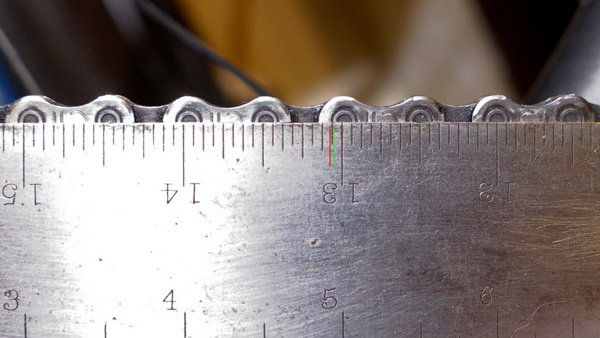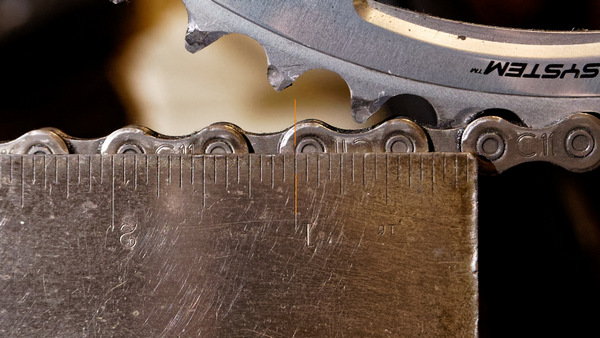Originally Posted by
stephr1
Seems to me that there might be more than .5% visual error in trying to use a ruler (even a steel one). Movement, visual angle, etc. would affect the reading. How do you do it and still ensure accuracy?
I have a caliper that can give me fairly accurate readings but even that can be problematic (like how to get 2 appropriately relative points to measure....like the same position on the 2 links used for measurement).
(the visual error is reduced by 12 times, since we measure 12 repeating sets of links. Measuring one pair of links would be too hard.)
Chain checkers
Yes, my Park Tool
chain checker would show around 0.25% on a new Campagnolo chain. Like the comment above, those chains very slowly elongate, still within 0.5% after 4000 miles, but the rollers and plates get their own wear, making the chain more flexible side-to-side. These tools are quick, and can be good for keeping an eye on a chain's wear.
I think the ruler method is better.
(0.5% is fairly arbitrary. Would 0.04% or 0.07% work equally well?)
Ruler
I use the 1 inch and 13 inch marks on my 18 inch steel ruler. (The edge of this 100 year old ruler is dinged up.)
It's not easy to measure accurately. I grip the chain and ruler together at the 1 inch marker, then view the 13 inch mark. I line up the same edge of the central pin. I do need to have my eye straight on at each end, otherwise the viewing angle is noticeable.
The green line is 0.5%, it's just slightly less than 1/16 inch. ( 0.5% is 12*.005 = .060 inches, 1/16 is .0625)
This measure was at or just past the 1/16 mark (red line). I shifted the chain to big chainring, smallest cog to get the longest return chain line.

